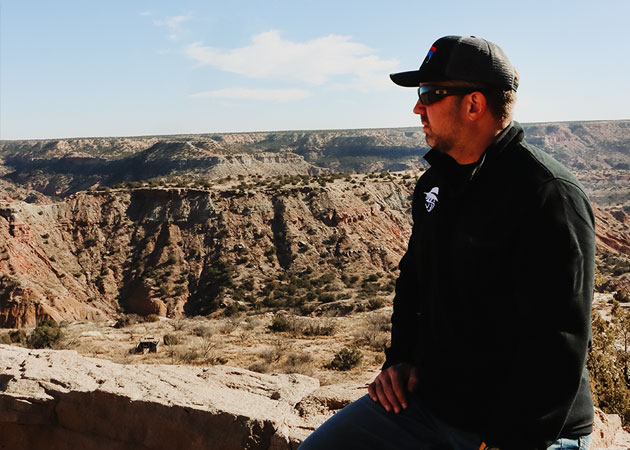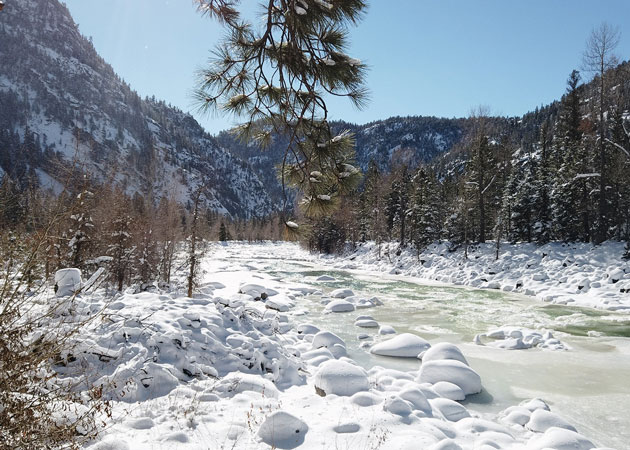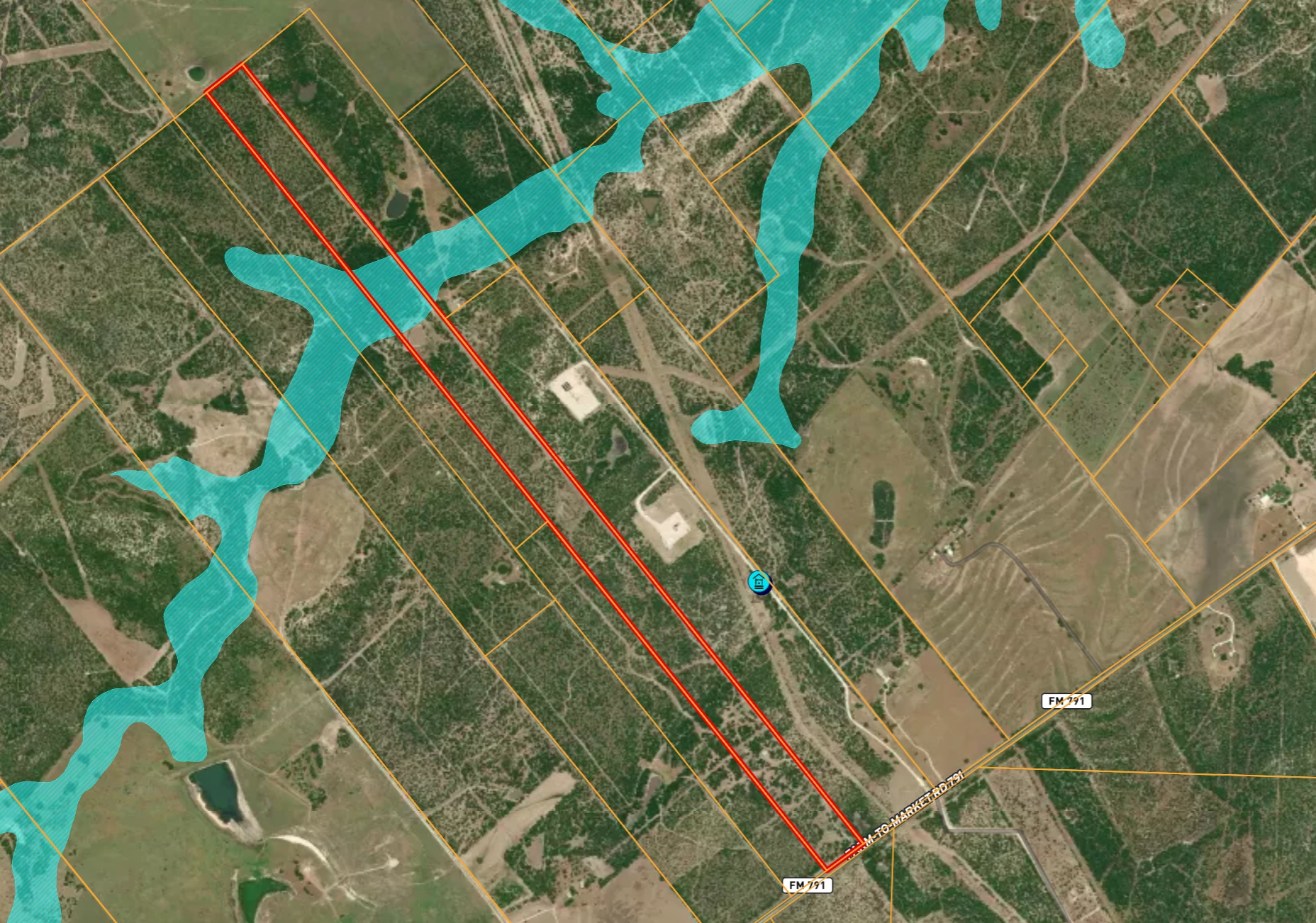The Ultimate Guide to Buying Ranches in the United States: A Comprehensive Step-by-Step Handbook is your key to unlocking the dream of ranch ownership.
Navigating this path can be intimidating, particularly for those unfamiliar with it. The world of ranch buying is vast and complex, often leaving aspiring owners feeling overwhelmed.
But here’s a truth bomb – owning a ranch doesn’t have to remain just a dream. With the right guidance and resources like The Ultimate Guide to Buying Ranches in the United States: A Comprehensive Step-by-Step Handbook, that sprawling landscape under wide-open skies can become yours!
This guide will take you by hand through every step, from understanding what draws people towards this lifestyle, deciphering common jargon in the industry, all the way down to planning for future succession on your land. It’s
Table Of Contents:
- Table of Contents:
- The Allure of Ranch Life: Understanding the Appeal
- Homesteading vs Ranching
- Navigating Legal Requirements for Ranch Owners
- Different Types of Ranch Operations
- Types of Ranching Operations: A Comprehensive Overview
- Decoding Common Ranch Jargon
- Buying Your Dream Ranch
- Financing Your Dream Ranch
- Finding Appealing Landscapes For Your Dream Ranch
- Hiring A Competent Ranch Manager: Your Guide to Success
- Future-Proofing Your Investment: Farm Succession Planning
- Outsider Perspective On Buying A Ranch
- FAQs in Relation to the Ultimate Guide to Buying Ranches in the United States: a Comprehensive Step-By-Step Handbook
- Conclusion
The Allure of Ranch Life: Understanding the Appeal
Not only is it about acquiring a piece of land, but the allure of ranch life can be seen in its multifaceted appeal to individuals from various backgrounds. The allure of ranch life is multifaceted, attracting individuals from all walks, including wealthy outsiders buying ranches.
This lifestyle offers an escape to wide-open spaces and self-sufficiency that urban environments can’t match. With rural land values on the rise due to increased demand for serene landscapes away from city centers, it’s clear more people are finding this way of life appealing.
Wealthy Outsiders Buying Ranches
Diversification is key in any investment strategy, and real estate investments like these serve as hedges against inflation while offering potential returns through appreciation over time. Moreover, owning such properties often comes with tax advantages related to agricultural activities conducted on them, which further sweetens the deal for investors looking at long-term gains.
In addition to financial considerations, though, lies another key aspect attracting folks towards becoming part-time or full-time ranchers – the desire to change lifestyle coupled with a deep commitment to environmental conservation efforts. (source).
Owning large tracts of undeveloped property allows owners to actively participate in preserving habitats for local wildlife species, ensuring healthy ecosystems for future generations to appreciate and benefit from too. Hence, despite the challenges associated with maintaining and running operations on a large scale, ranches continue to grow in popularity thanks to the unique combination of factors mentioned above. It truly makes a captivating proposition for anyone dreaming about embracing a simple yet fulfilling way of life in the countryside.
Homesteading vs Ranching
If you’re among the wealthy outsiders buying ranches, it’s essential to understand what life is like in rural America. It’s far from the idyllic scenes often portrayed in glossy magazines and commercials. There are many factors to consider, such as land ownership, agricultural-use tax rates, finding appealing landscapes, and more.
The first question would-be ranch owners need to ask themselves is whether they want a homestead or a ranch. These two terms may seem interchangeable but represent different types of farming operations with distinct goals.
Understanding Homesteading
A homestead is essentially a small subsistence farm aimed at self-sufficiency rather than commercial production of food or fiber. The goal here isn’t about making money but providing for your family through gardens, orchards, and raising small animals that yield fruit, vegetables, eggs, meat, and dairy products.
In recent years, some have begun referring to themselves as “farmsteaders”, indicating they might sell excess produce at local farmer markets while still prioritizing self-sustainability over commerce.
Ranch Life: A More Commercial Venture
Colorado-based Mirr Ranch Group adds a clear distinction between homesteading and owning a ranch. Unlike the former which focuses on self-sufficiency, ranches are commercial operations geared towards producing live animals, meat, and fiber as their primary product lineup.
This doesn’t mean all ranches look alike though; there’s quite an array out there ranging from hobby farms owned by lifestyle enthusiasts right up to large-scale operations such as those found in South America. The year-round cattle operation offered by Montana-based Sweet-water Ranches emphasizes this diversity within the realm of ranching even further.
- Nathan Brooker outsider ranchers will find challenges unique to this type of agriculture – things like understanding complicated business models associated with animal breeding programs or obtaining hunting licenses if wildlife management forms part of their revenue stream.
- Finding competent land brokers can also be tricky when looking into purchasing blue-ribbon fishing property or other niche real estate offerings within rural lands.
- Breeding exotic animals could form another aspect of diversifying income streams for these larger-scale ventures too.
The Size Matters: Scale of Operation
A typical ranch spans across hundreds or even thousands of acres, allowing extensive grazing necessary for raising livestock like cattle or sheep commercially. As per an average estimate, U.S ranches cover about 441 acres.
On the flip side, a homestead can be as petite as your urban backyard garden plot or extend up to several dozen acres, depending upon individual needs and available resources. Some suggest a half-acre could suffice for starting a basic vegetable garden along with some poultry keeping activities.
Purpose-Driven Operations
Research suggests that the primary objective behind running a ranch is producing animals such as beef cattle, dairy cows, etc., either directly intended for consumption marketplaces or indirectly through products like milk.
Homesteading takes a more self-sustaining route, centering on producing various harvests, organic products, veggies and even tending to small animals like chickens and goats. This diversified approach not only helps maintain soil health but also provides varied nutrition sources simultaneously.
Economic Implications & Rural Land Values:
Running large-scale operations like those seen in year-round cattle operations requires substantial financial investment upfront due to costs associated with purchasing rural lands where prices have started rising significantly over recent years.
These expenses add up quickly when considering additional overheads involved in maintaining herds throughout seasons, including winter feed during unproductive pasture months. A study by XYZ presents detailed insights into cash flow management challenges faced by modern-day wealthy outsiders buying ranches, especially pertaining to seasonal cycles inherent within this business model.
Key Takeaway:
Ranching and homesteading, while both off-grid living options, differ significantly in scale and purpose. Ranches are large-scale operations focusing on commercial livestock raising, requiring substantial investment. Homesteads lean towards self-sufficiency with diversified crop production on a smaller scale.
Navigating Legal Requirements for Ranch Owners
Stepping into the world of ranching involves understanding and complying with a myriad of legal requirements. Whether your focus is on commercial meat production or fiber, these laws are an integral part of managing lands.
Making Smart Use of Internet Resources
The internet can be a treasure trove when it comes to researching legalities in ranching. But remember, not all online sources provide reliable information. It’s crucial to verify credibility before you accept any data as fact.
We recommend turning primarily towards accredited universities and colleges boasting reputable agricultural websites such as The USDA official site and Extension.org. These sites offer accurate insights about farming laws across different states which would-be ranch owners find invaluable.
In addition, resources like The Merck Veterinary Manual Veterinary Parasitology Reference Manual provide comprehensive details on livestock health, an essential aspect often governed by stringent guidelines.
Different Types of Ranch Operations
Ranch life isn’t one-size-fits-all; there are several types, each with unique operations – from year-round cattle operation hunting requiring obtaining licenses to those breeding exotic animals. Here are a few examples:
Hunting Ranches: A Closer Look
Hunting properties present an entirely different set of legality due to the need for specific permits and hunting licenses. They also serve as blue-ribbon fishing property depending on local wildlife populations and water features within boundaries.
Owners must be aware that certain species may have protected status under legislation like the Endangered Species Act, which could affect land use practices and potential revenue streams associated with guided hunts and angling trips. In addition most activates require obtaining hunting licenses.
An Introduction to Dude Ranches
Dude ranches are establishments where adventure tourism meets traditional agriculture, catering to individuals who love experiencing rural life firsthand. They fall into a special category necessitating adherence to hospitality industry standards alongside typical obligations.
Organizations such as the Dude Ranchers’ Association exist to support them by providing the necessary tools to operate effectively and maintain a high level of guest satisfaction, while concurrently ensuring compliance with
Key Takeaway:
When buying a ranch, it’s essential to understand the legal requirements for different types of operations. Use credible online resources like accredited agricultural websites for accurate information. Remember, each ranch type has unique laws and guidelines – from hunting licenses for hunting properties to hospitality standards for dude ranches.
Types of Ranching Operations: A Comprehensive Overview
The vast and diverse American landscape offers a plethora of opportunities for ranch operations. From the Colorado-based Mirr Ranch Group to Montana-based Sweetwater Ranches, there are myriad options available for potential investors for example:
Hunting Ranges: Conservation Meets Profitability
A popular choice among those passionate about wildlife conservation is hunting ranges. These properties serve as habitats for various game species such as deer or elk. Not only do they contribute towards biodiversity but also generate income through obtaining hunting licenses.
- Familiarize yourself with regulations around hunting licenses from the U.S. Fish & Wildlife Service website.
- Incorporate blue-ribbon fishing property in your range if possible – it’s another revenue stream.
- Become an active part in maintaining local ecosystems while earning profits at the same time.
Dude Ranches: Adventure Tourism on Horseback
Decoding Common Ranch Jargon
The ranching industry is filled with unique terminologies, often referred to as “ranch jargon.” For prospective ranch owners and outsiders in the ranching community, understanding these terms is crucial for comprehending the business.
‘Water,’ in the context of a ranch, carries more significance than just being H20. It encompasses legal rights related to water usage on your property, which is essential for irrigation or providing drinking water for livestock. ‘Water Rights’ are specific laws or contracts that grant individuals access and use of designated water resources.
Cattle Operation Terms: A Beginner’s Guide
If you’re venturing into year-round cattle operation territory, you’ll frequently encounter several key phrases. One such term is ‘Calving,’ which simply refers to cows giving birth. Another common term is ‘weaning,’ which involves transitioning young calves from mother’s milk to solid food sources like grasses and grains.
A defined period during which breeding activities occur within your herd, usually in spring or early summer depending on local climate conditions, is known as the ‘breeding season.’ Understanding these details is integral to effectively managing cattle operations. Beef Magazine’s guide provides some great insights here.
To help you understand how to run a profitable ranch go here – LINK
Hunting Licenses and Exotic Animals: Not Just Game Play
In hunting-centric establishments where obtaining hunting licenses might be necessary, it’s important to be aware of regulations regarding species-specific permits, especially if you intend to breed exotic animals. Native wildlife such as deer and elk, as well as non-native species like zebras and antelopes, must be taken into consideration when obtaining hunting licenses. You can find more information on the U.S Fish & Wildlife Service website. Another great resource to obtaining hunting licences is – TPWD Exotic Game

Exotics (Non-Game) vs Native (Game) Animals – Know the laws
Buying Your Dream Ranch
If you’re looking to buy a ranch or rural land here are a few key steps. Make sure to hire competent rural land brokers to assist in finding the property you want and also educate you and your team on rural land values, when land prices started going up, land use, agricultural-use tax rates, various different operations of ranching, revenue streams, financing, natural resources, and many other important factors. Finding a ranch can be complicated business and rural land brokers alleviate some of the complication.
Financing Your Dream Ranch
The path to owning your dream ranch begins with understanding the financial landscape. The financing options are diverse, influenced by variables such as credit score, down payment capability (15% to 20% typically), term of loan, and property type.
Mainstream banks or credit unions often provide rural home loans for prospective ranch owners. However, these institutions typically demand high down payments and solid credit scores.
Agricultural-use Tax Rates: A Crucial Consideration
Beyond securing finance for your ranch purchase is the critical matter of agricultural-use tax rates. These taxes can significantly sway the total cost of owning a ranch in rural America.
An agricultural use or wildlife use valuation allows landowners primarily engaged in farming, livestock, or even managing wildlife rearing to enjoy lower property taxes based on productivity value rather than market value. Qualifying for an agricultural exemption requires proof that you’ve used your land agriculturally over certain years before applying; income evidence from agriculture activities during those years may also be necessary depending on state regulations.
Federal Farm Loan Programs: An Alternative Financing Option
If traditional bank loans appear daunting due to strict requirements or elevated interest rates, then federal farm loan programs might offer a viable alternative. USDA Rural Development Single Family Housing Program caters specifically towards individuals eyeing properties within rustic landscapes, offering 100% financing if they meet eligibility criteria set by the agency. It’s essential, however, prior to opting for any program, to do comprehensive research to understand all conditions attached to each one of them to ensure the best fit according to individual needs and circumstances.
Always review flood plains on the property you want to buy (Blue)
Finding Appealing Landscapes For Your Dream Ranch
When it comes to ranch ownership, the landscape you choose can make or break your venture. The right location is key, whether you’re a wealthy outsider buying a ranch for personal enjoyment or an experienced farmer looking at a year-round cattle operation.
The Importance of Choosing the Right Landscape
Picking the correct terrain can have a major effect on both everyday activities and your venture’s long haul achievement. It’s not just about finding appealing landscapes; there are other factors that need consideration too:
- Climate Conditions: Different regions have different climates that affect crop growth and livestock health.
- Natural Resources Availability: Ranches require ample natural resources like fresh water sources, so check out properties with rivers or lakes nearby.
- Topography: The topography of a property and its intended use are important factors to consider when determining the suitability of the land for various purposes.
- Flood Plains: Before buying a property, it is important to thoroughly examine the flood plain. This is because being located in a flood plain can restrict your ability to construct any improvements on the land. Therefore, it is crucial to review this information before making a purchase decision.
Landscape Types And Their Suitability For Various Operations
If running a hunting lodge is more up your alley than traditional farming, then consider investing in densely wooded areas teeming with wildlife. Obtaining hunting licenses could open doors to additional revenue streams from the tourism industry. Such lands often double up as blue-ribbon fishing property, attracting anglers nationwide due to their rich aquatic biodiversity.
- Cattle Farming – Open grasslands found across states like Texas and Wyoming offer rich pastures supporting year-round grazing activities without needing much supplementary feed.
- Hunting Lodges – Densely wooded regions provide habitat for various species, making them ideal locations if you’re interested in offering guided hunts after securing necessary permits/licenses.
Hiring A Competent Ranch Manager: Your Guide to Success
Running a successful ranch requires more than just passion and investment. The key lies in the hands of an efficient manager who can seamlessly navigate through this complicated business, ensuring smooth operations on your land. Nathan Brooker, a renowned expert in rural real estate management, states:
In essence, hiring a skilled professional is crucial for managing lands effectively while increasing rural land values.
The Art of Identifying Potential Candidates
Discovering the correct fit isn’t a straightforward errand. It’s about identifying individuals with relevant experience and strong leadership skills – those capable of handling emergencies or familiar with agricultural-use tax rates are particularly valuable.
- Candidates should have prior experience managing similar types of operations or related fields such as agriculture science or veterinary medicine.
- An effective problem-solver will be able to deal swiftly with unexpected situations like disease outbreaks among livestock without causing panic within the team.
- A good leader motivates their staff members while maintaining high standards for animal welfare and environmental stewardship.
- The ranch owner should always do a background and credit check on the ranch manager candidate(s).
- The ranch owner should ask for referrals in addition.
Selecting An Ideal Match For Your Operation’s Needs
The uniqueness every operation brings along its own set requirements based upon factors such as size, location, and type (e.g., cattle vs hunting). Hence, when you’re out there looking to hire, you need someone who understands these nuances and tailors their approach accordingly.
You may consider working with specialized recruitment agencies that provide access to qualified candidates across different regions, which ensures you find one whose expertise aligns perfectly with your specific needs.
Evaluating Prospective Managers Effectively
To ensure potential managers meet expectations, it is necessary to prepare a list of pertinent questions during interviews covering essential aspects ranging from their familiarity with local farming ordinances/agricultural use tax rates to their ability to handle crises.
This process gauges how well equipped they are in navigating the complex landscape successfully without jeopardizing any aspect of your investment. In addition it is crucial to do a background and credit check on the ranch manager candidate(s) and ask for referrals.
Key Takeaway: Buying a ranch isn’t just about the land; it’s also about finding an adept manager. This person should have relevant experience, strong leadership skills, and be able to handle emergencies. Consider working with recruitment agencies for access to qualified candidates who understand your specific needs. Don’t forget – effective interviewing is crucial.
Future-Proofing Your Investment: Farm Succession Planning
Farm succession planning is a critical step in the journey of owning and managing your dream ranch. It’s not just about preserving wealth, but also ensuring that future generations can continue to uphold the values associated with land conservation and rural America.
This process involves several key considerations – identifying goals for transition, taking into account asset-based factors during succession planning, and orchestrating gradual shifts in responsibilities when passing on your estate or farm to heirs.
Leveraging Life Insurance For Smooth Transitions
A comprehensive life insurance policy serves as an invaluable tool within any well-thought-out farm succession plan. The death benefit provided by such policies offers financial stability at crucial transition periods – easing potential burdens placed upon beneficiaries.
The proceeds from these policies could be utilized towards settling debts or taxes incurred due to property transfers post-death; thereby preventing forced sales of valuable lands simply to meet immediate financial obligations.
Navigating IRS Estate And Gift Tax Inheritance Laws
In addition to leveraging life insurance plans effectively, it’s essential for would-be ranch owners like Nathan Brooker and outsider ranchers to comprehend how IRS Estate and Gift Tax laws apply when properties are transferred through inheritance or gifts. Understanding these tax implications helps mitigate unnecessary expenses while maximizing returns on investment (ROI).
- Estate Taxes: Taxes applied after assets have been transferred following one’s demise.
- Gift Taxes: If you gift someone money or property during your lifetime, this tax applies.
- 1031 Exchange: Using a previous real estate investment to buy a ranch without paying capital gains.
These scenarios offer exemptions based on current regulations, which require careful study before initiating any transfer processes.
Outsider Perspective On Buying A Ranch
The appeal of ranch life is not exclusive to those born into it. Wealthy outsiders buying ranches are becoming increasingly common, drawn by the allure of vast open spaces and a connection with nature. 90% of ranch buyers are new land owners currently. As Nathan Brooker, an outsider-turned-rancher himself, states:
“In essence, potential buyers from non-agricultural backgrounds must prepare for unique challenges that come with such ownership.”
Navigating Through the Complexities of Ranch Operations
Ranches aren’t just about picturesque landscapes; they require understanding complex operations like livestock management or dealing with weather patterns affecting crops and grazing conditions.
A competent ranch manager can be invaluable here since they manage day-to-day tasks, allowing owners to enjoy their investment without getting bogged down by operational details.
Potential owners also need to consider legal implications tied up with land ownership – whether it’s obtaining hunting licenses if your property doubles as a blue-ribbon fishing property or complying with agricultural-use tax rates applicable to holdings.
Finding the Right Type of Ranch for You
Your choice depends largely upon personal preferences and financial goals – whether you’re interested in a year-round cattle operation like the Wyoming High Lonesome Ranch offering opportunities for meat production; dude-ranches picked by adventure tourism enthusiasts supported by organizations like the Dude Ranchers’ Association; or hunting properties attracting outdoor sports lovers willing to pay premium prices for the unique experiences offered thereon.
In conclusion, investing in a US-based farmstead requires careful consideration given its complexities, but done right, it offers immense rewards both financially and personally.
The key lies in being well-informed and taking the necessary steps to do thorough research before making any decisions.
FAQs in Relation to the Ultimate Guide to Buying Ranches in the United States: a Comprehensive Step-By-Step Handbook
What is the difference between a ranch and a farm?
A ranch primarily focuses on raising livestock for meat or wool, while a farm typically grows crops. The scale of operations also often differs, with ranches generally covering larger areas.
Can a ranch pay for itself?
Ranches can be self-sustaining if managed effectively. Revenue sources include selling livestock products, hunting leases, tourism activities like dude-ranching, breed exotic animals, and potentially government subsidies.
Is buying ranch land a good investment?
Purchasing rural property can provide financial benefits through appreciation in land value over time and potential income from agricultural activities or leasing rights to hunters or tourists. Rural land values go up overtime on average.
How do American ranches make money?
Ranches generate income by selling livestock products such as meat and wool. Other revenue streams may include agritourism activities, hunting leases, oil/mineral rights exploitation, or conservation easements among others.
Conclusion
Thank you for reading the The Ultimate Guide to Buying Ranches in the United States: A Comprehensive Step-by-Step Handbook
The allure of ranch life is undeniable, with its open skies and vast landscapes.
No matter what attracts you, be it the autonomy of homesteading or the commercial possibilities of ranching, there’s a way to go.
Navigating legal requirements can be complex, but resources like The USDA official site and Extension.org make it manageable.
You’ve explored various types of operations from hunting to dude ranches, each with their unique appeal and challenges.
Understanding common jargon in this industry has been demystified too! Another resource is Texas A&M Agrilife.
You now know that financing your dream isn’t as daunting as it seems; options abound if you look in the right places.
Agricultural-use tax rates are part and parcel when buying a ranch – knowledge is power here!
With all these insights from The Ultimate Guide to Buying Ranches in the United States: A Comprehensive Step-by-Step Handbook under your belt, finding an appealing landscape for your dream ranch doesn’t seem so far-fetched anymore.
Hiring competent managers who keep things running smoothly






